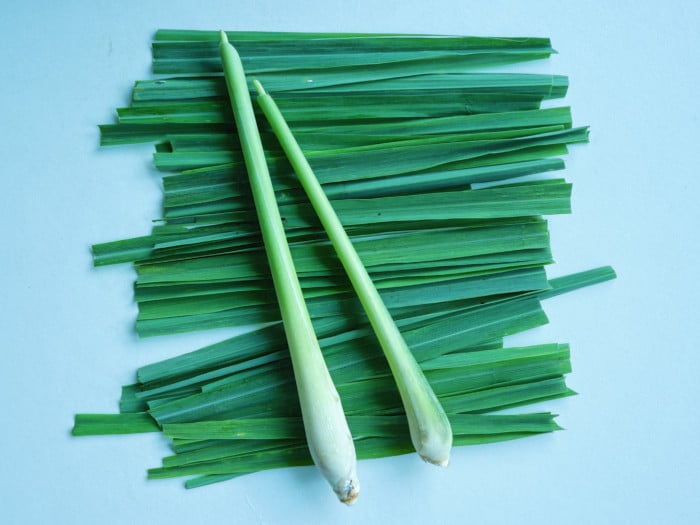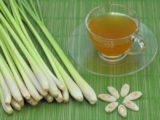Lemongrass is what gives Thai curries their unique lemony, fresh flavor. This woody, fragrant herb can also take a cocktail recipe up a few notches or make a plain iced lemonade exotic. The stalks cannot be eaten as they are woody and tough but they need to be prepared in the right way to get the maximum amount of flavor and fragrance of their essential oils.
How to Use Lemongrass?
So let’s get straight on how to use lemongrass the right way in curries, soups, and stews. We answer the most common how to use lemongrass FAQs.

Lemongrass is used fresh or dry and adds a zing to Thai dishes. Photo Credit: Shutterstock
How To Choose & Buy Lemongrass?
Fresh lemongrass stalks have a distinctive herbal, floral aroma. If you are lucky to find fresh stalks, make sure you buy the ones with a strong fragrance. Choose stalks that are firm, unblemished, and relatively heavy when you hold them. They ideally should be whitish-green to bright green in color. Brown, flaky ones, or stalks that come apart easily when you hold them are a no-no as they are probably dried up and will not add any flavor to the dish.
You can find fresh lemongrass in the produce section in Asian stores or most supermarkets. It is also easily available online. Sometimes, you may find the freeze-dried stalks in the freezer section of grocery stores. As a last option, you can also buy the dried version if you cannot find the fresh ones but it will not give the bright, lemony scent that fresh stalks give.
How To Prepare Lemongrass?
To prepare lemongrass, you will need a sharp serrated knife. Here is the step-by-step method to use lemongrass:
- First, you will have to discard the tough outer leaves of the lemongrass stalks by peeling them away with your fingers.
- The soft inner part of the stalk is what you want to use to cook.
- You can use whole stalks to flavor curries or soups, and remove it just before serving.
- Make sure you bruise the stalks by making cuts or pound it on the kitchen counter to release the aromatic oils before use.
- Alternatively, you can cut off the bulb end and slice the bottom one-third of the stalk into circular slices.
- Using an old-fashioned mortar and pestle or a food processor, make a fine paste. It will still be fibrous and needs to be boiled well in curries or soups to be edible.
Lemongrass leaves can be used just like the stalks. Bruise them by giving them a slight twist or pound and cut it into manageable pieces with kitchen scissors to steep in tea. Make sure you strain the beverage as the leaves are too fibrous to chew.
How To Cook With Lemongrass?
Depending on how you intend to use it, you can cut the lemongrass stalk in two ways.
For Soups, Teas, & Cocktails
First, you need to trim parts of the stalks that are tough. Crush the rest to release the aromatic essential oils of the herb. You can also cut the stalks into 1-inch pieces and add them to any soup or broth of your choice. Remove the stalks before serving. You can try this delicious fragrant tea using the stalks – How To Make Fresh Lemongrass Tea.
For Pastes and Salads
To use for salads, make sure you trim off fibrous parts of the stalks and use the 3-4 inch soft middle portion. Lemongrass releases flavor the longer it is cooked. Add it at the start of a recipe for a rich lemony flavor. If you wish to have a milder taste, add it a little later in the cooking stage to avoid a dominating herbal flavor.
Storing Lemongrass
You can store the stalks in the fridge for up to two weeks but make sure you wrap it with cling-wrap. Lemongrass also freezes very well. You can freeze whole stalks to use whenever you need it.

